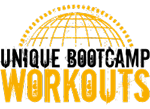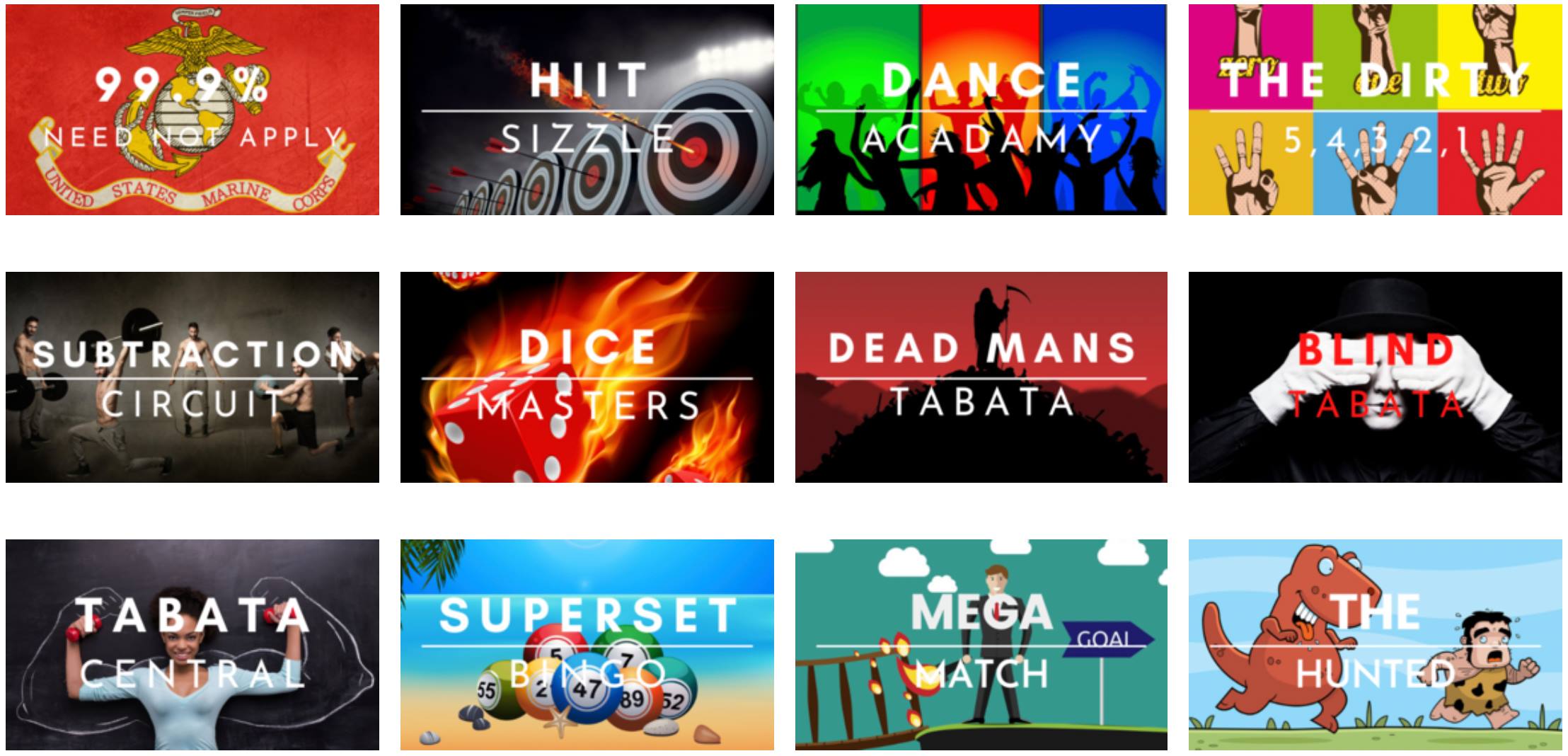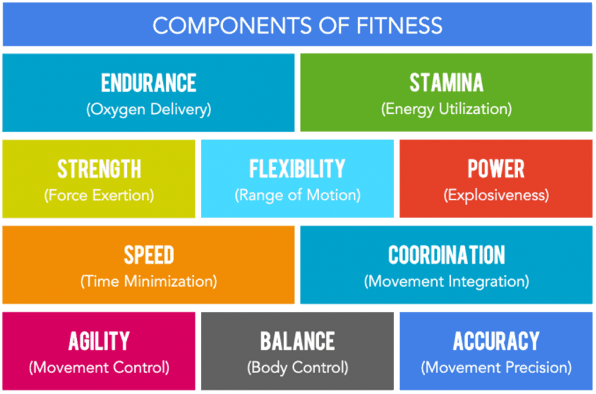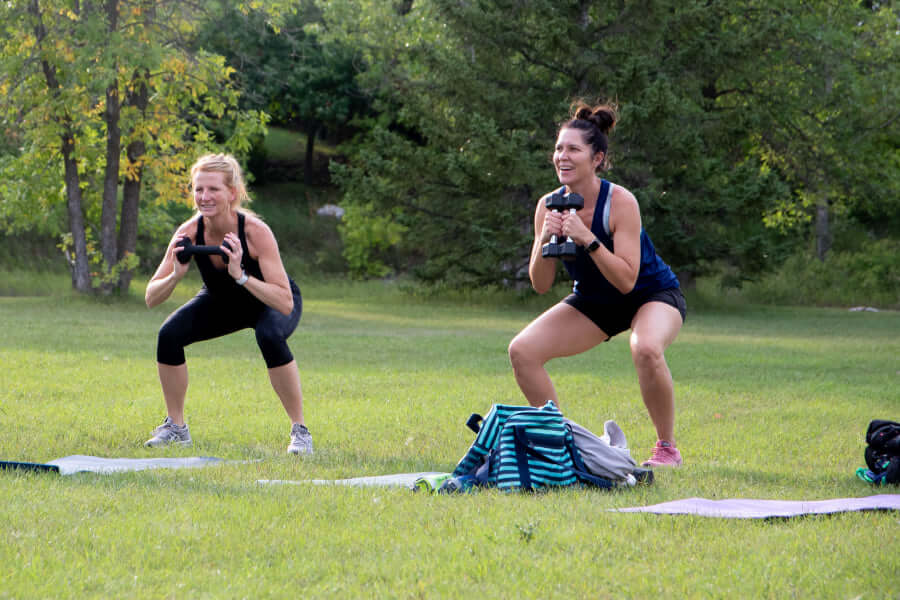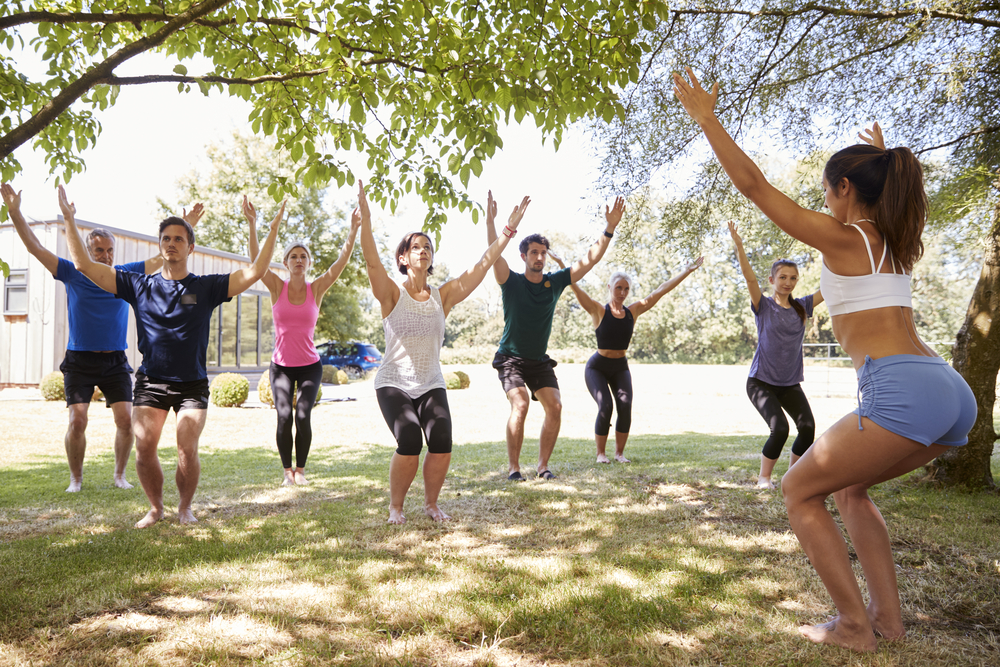Like it or not, the most important aspect of running a boot camp is to ensure that it is safe and enjoyable. People pay for results but stay for the entertainment.
Dry, boring, unimaginative bootcamp workouts do not inspire clients, and without inspiration a boot camp can become a chore rather than something you actually enjoy.
In this article, I am going to give you my top ten tips for designing better bootcamp workouts and ensuring that you have the most popular boot camp in town.
Who am I?
My name is Leon, and I am the founder of the Workout Design Club and Unique Bootcamp Workouts. After leaving the British Royal Marines in April 2013, I started my own boot camp in Plymouth UK.
At first, I found it really difficult to design my own bootcamp workouts. I was worried that my clients would be bored, and that eventually they might leave.
So instead of focussing on ways to bring more people to my boot camps, I instead concentrated on ensuring that my boot camp was the best in my area. I spent hours researching group fitness ideas, unique bootcamp exercises, fun bootcamp games, and ways to establish a community.
Subscribe below for 7 free bootcamp ideas
Thanks to this, I was able to grow my boot camp to 120+ members and two locations. This was done mainly through word of mouth.
I learned that with boot camps, having fresh, exciting workouts week-in, week-out was worth as much as any fitness marketing plan.
I became an expert in designing fun bootcamp workouts, and I’m here today to share my top ten tips, so you can design your own killer workouts.
My Top Ten Tips for Designing Killer Bootcamp Workouts
One thing that I have learned is that if you try to do too much, too fast, you’ll become overwhelmed. So, feel free to pick and choose which tips you follow. If you can manage all ten then that is fantastic, but don’t put too much pressure on yourself.
Tip #1 Document Your Best Bootcamp Workouts

The first thing you should do, is make sure that you are keeping records of all of your bootcamp workouts. Particularly your best ones. The workouts that had your clients walking away happy and exhausted.
The best thing to do is create eight folders in Google Drive. That way, when you type up your workouts, you can add them to the relevant folders and start building your bootcamp workout library.
The idea is to not repeat the same workouts every week, but rather have them on a rotation. For example. If you’ve been running a twice a week boot camp for 10 weeks, then that’s 20 workouts.
Once you have enough amazing bootcamp workout routines written down, you can almost run your boot camps on auto-pilot.
Have You Tried Our Group Fitness Workout Builder?
The Workout Design Club is a group fitness search engine that lets you create stunning group workouts lightening fast.
But think of the benefits of having a record of 50 amazing bootcamp workouts. You can hire new trainers and give them your workouts to teach.
You can spend the extra time saved marketing your boot camp. You can turn these workouts into an eBook (using Designrr) or fitness manual and sell it to your clients, or other coaches.
The best part? None of this requires any extra work on your part. All you are doing is keeping hold of the workouts that you had written down anyway.
Tip #2 Analyse Your Bad Bootcamp Workouts
What separates good coaches from bad coaches? Well, there are many factors, but one of them is analysing your bad workouts.
A bad coach will make excuses for why a workout failed. Blaming the clients for being quieter than usual, blaming the weather, or just chalking it down to a bad day.
These may all be true, but it could be the workout itself. Spend 5-10 minutes post-workout looking at your session critically. Was it too difficult? Too easy? Was there too little interaction due to a lack of team exercises?
Did the workout just not flow well?
Doing this will really help you to design better bootcamp workouts in the future. If you can identify what went wrong, then you can learn from it.
The more you do this, the less often it will occur (particularly if you follow the tips in this article).
Tip #3 Give Your Bootcamp Workouts Names
This tip may seem a little pointless at first, but it represents a dynamic change in how you and your clients view your boot camp.
The idea comes from CrossFit, which may have its critics, but does a lot right when it comes to marketing a fun class. I also use fun workout names that represent the type of bootcamp challenges I design weekly for the Workout Design Club. See the above image.
This tip follows on from tip #1, if you have a particularly good workout (or a particularly challenging one) you are going to write it down and use it in the future. So why not give it a kick-ass name?
Build A Butt Workout
- TGI Leg Day
- Cardio Incredible
- Dynamite Chipper
- Filthy 50
You get the idea. Something mildly amusing, that gives your members an idea of what is about to go on.
Write a little description to go with it, use your copywriting skills. This can help to boost turnout and may also help you gain new members. A funny or cool name can help your members recommend your boot camp to their friends and family.
Sounds a bit better than “Workout number 5”.
Tip #4 Continue Your Development
There is nothing worse than treading water, even if you are in a good position and your boot camp is going well. Finding ways to continue your development will help your business to keep growing. Luckily, there are so many ways to continue your development with boot camps.
You can read books on exercise and nutrition or focus on marketing courses. Fitness Education Online have some phenomenal courses that I highly recommend. Then there are podcasts, YouTube videos, articles, and magazines.
Focussing on exercise and nutrition will help you get better results for your clients, design better workouts and nutrition plans, and lead to more renewals and referrals.
Focussing on bootcamp marketing and fitness business management will make your operation more efficient and more lucrative. Meaning that you can earn more and work less, which should be everyone’s goal.
Continuing your education will also help keep you motivated and enjoying your job. Boredom often occurs when you end up doing the same thing week-in, week-out, but learning new skills can prevent this.
Your workout designs will reach a new level if you keep educating yourself, and that’s going to really help.
You can also learn from other workout styles. What was it that made the Insanity workout so popular? What lessons can you take from it and apply to your own business?
Tip #5 The 11 Components of Fitness
- Agility
- Balance
- Body Composition
- Cardiovascular Endurance
- Coordination
- Flexibility
- Muscular Endurance
- Muscular Strength
- Power
- Reaction Time
- Speed
There are two benefits to designing your workouts around the 11 components of fitness. Firstly, it is a fantastic way to build overall fitness for your clients. But more importantly, it gives you a structure and a template for every workout.
But what are the 10 components of fitness?
Having this ten-point checklist ready when designing workouts will make things so much easier for you. Also, the results from following these 11 components are out of this world.
You can combine them of course, there are bootcamp exercises that target agility as well as balance. There are bootcamp exercises that combine reaction time and power, or reaction time and speed.
Tip #6 Include Fun Team Elements into Every Workout
I really can’t stress enough how important it is to build a fitness community within your boot camp. Getting your clients to work together, socialise together, and look forward to seeing each other will do more to protect your business than anything else.
There are many ways to achieve this, organising charity events, going to the pub together, and similar activities are all useful. But to lay the groundwork you really want to establish a team mindset within your sessions.
Think about why people turn up week after week for their amateur rugby team. It can’t be the stinging tackles, the rain, the mud, the howling gales, it's because they belong to a team. If they don’t turn up they are letting the team down, they are missing out, they are making it more difficult for their friends.
You want that exact same feeling to be going through every member’s head when they are deciding whether to turn up or not on a cold, rainy Monday.
How do you do this? Team workouts and team games.
Pick exercises that require more than one person, add team competitions such as relay races into your workouts (see above video). Have month long competitions between four teams (like Sports day at school).
This will not only strengthen the bonds between members, but it will also help people work out harder (competition is a great source of motivation), and it can really help you get more referrals.
One aspect of my Workout Design Club is creating amazing team workouts, as it is such a crucial part of building your business.
Tip #7 Create a Bootcamp Exercise Library
In tip one, I discussed the importance of saving and recording your best bootcamp workouts. Well this also applies to your best exercises.
Everyone has their own exercise library, even if they’ve never written one down or thought about it. It is a collection of exercises that you know how to coach properly. The longer you coach, the larger your exercise library will become.
This can be caused by your own learning (see tip 4), through trial and error, and from observing other coaches and networking with other boot camp owners.
Creating a proper exercise library with exercise descriptions, muscles worked, variations, and ways to increase/reduce difficulty, is something that will really help you to stand out from the crowd.
Here is an example:
Exercise: Air Squat
Muscles Worked: Glutes, Quads, Hamstrings, Calves
Exercise Description: Feet shoulder width apart, toes facing out slightly. Push your chest out and hold your arms out in front of you. Hold your breath, and then lower your glutes towards the ground. Keeping your heels flat on the ground throughout. Aim to get your thighs parallel to the ground or lower. Pause, and then breathe out as you rise back up.
Variations: Jumping squats, sumo squats, iso squats, partner squats
Make the Exercise Easier: Perform box squats, partner-assisted squats to create a counter-weight.
Make the Exercise Harder: Increase ROM, iso-holds at bottom of squat.
Obviously, you don’t have to make it as detailed as that, it can be all kept on an excel spreadsheet, or you can make it as fancy as possible with videos and lots of hyperlinks.
There are many benefits to having an exercise library, such as:
Tip #8 Swap Training Ideas with Other Group Trainers
Coaching a boot camp requires you to drop the ego at times, many of us learn that the hard way. It is virtually impossible to start a boot camp and immediately know everything there is to know. So make sure that you are always trying to learn from your fellow coaches.
New workouts, new exercises, new variations, marketing tips, fun warm ups and cool downs. Constantly look at what other coaches are doing. Add the things you like to your own sessions and discard what you don’t like.
On the other side of the coin, make sure that you are there to help your fellow coaches. Remember, there are more than enough clients for every coach to have a successful boot camp. It does not harm your boot camp to help your competition.
If anything, it legitimises boot camps more, and ensures that nobody rests on their laurels. Your boot camp will be stronger for it.
Another benefit is the networking opportunities. Many jobs within the fitness industry are actually quite isolated. Many boot camp owners work alone, and don’t have the chance to socialise with work colleagues as such.
Interacting more with fellow coaches will help create a support network, may help with referrals, and you may future job opportunities or partnerships becoming available over the years.
Tip #9 Always Start with A Fun Warm Up
Do you remember PE lessons as a kid? Wasn’t the warm up always terrible! Boring, insipid, and repetitive. Just a bunch of static stretches and some laps round the field. Hardly inspiring.
You REALLY don’t want to start off your boot camp with a dull warm up. This is the time to invigorate your members, get them talking, laughing, and breathing hard.
A fun warm up can help set the tone for the whole session, they can foster communication between members, and a warm up is a great opportunity to add in some team workouts (see tip six).
What makes a good warm up?
Remember, it’s not just about exercise selection. You yourself need to be energetic, loud, and confident. This is your moment to warm yourself up!
Many coaches can find it difficult to project their voice with confidence. Using a warm up as an excuse to be as loud and enthusiastic as possible will help you to hit the ground running each session.
If a warm up is the perfect way to motivate your group, the cool down is where you want to calm them down, relax them, and get them leaving your session on a high.
Tip #10 Use the Cool-down to Relax Your Members
Too often, boot camp coaches treat cool-downs as an afterthought. But it is during cool-downs that your members get to know, like, and trust you.
A well delivered cool-down will help your members begin to recover from the session, feel part of a team/group, and it is here that you can turn their attention to the next session.
Starting a cool-down with another team game is a good idea, but choose one that is less competitive, more relaxed, and low-intensity.
Partner stretches are a great way to 1) help reduce post-exercise stiffness, and 2) get your members interacting with each other. Assign people together and try and mix it up session to session so people get to know each other.
Stretching exercises performed in a circle is also a great way to interact with everyone and build up that camaraderie. Talk quieter, more intimately, get members to focus on their breathing. You want calmness and a relaxing atmosphere.
Now isn’t that better than a 400m jog and a tricep stretch?
Final Thoughts
Planning bootcamp workouts that are effective, creative, and fun is an essential skill if you want to stand out and create a buzz around your business. This is why I created the Workout Design Club.
With over 2000 creative drills to choose from, the WDC gives you a simple, proven plan for delivering consistently amazing workouts.
The Workout Design Club is an advanced group fitness search engine that gives you access to a massive variety of fun, creative & challenging group fitness ideas. It lets you plan interesting and varied sessions in a matter of minutes, which is extremely valuable when you live a busy life.
